
People are constantly trying to hide their SEO secrets in order to preserve "so-called" rankings and SERP dominance.
We all want to hit the first page of Google results and don't want to tell people how we got there. Especially our competitors, right?
But did you know that you can find out what your competitor's SEO strategy is?
And the best part? It's totally legal, and free to do. In this post, you will learn exactly how to find competitor backlinks.
Before we dive into the nitty-gritty of checking competitor backlinks, let's take a moment to understand why we might want to do it.
As much as we don't like to have competitors, they do help us—especially when it comes to SEO.
That's because your competitors may be using a strategy to improve their ranking positions, and taking the coveted first spot and majority of the organic clicks.
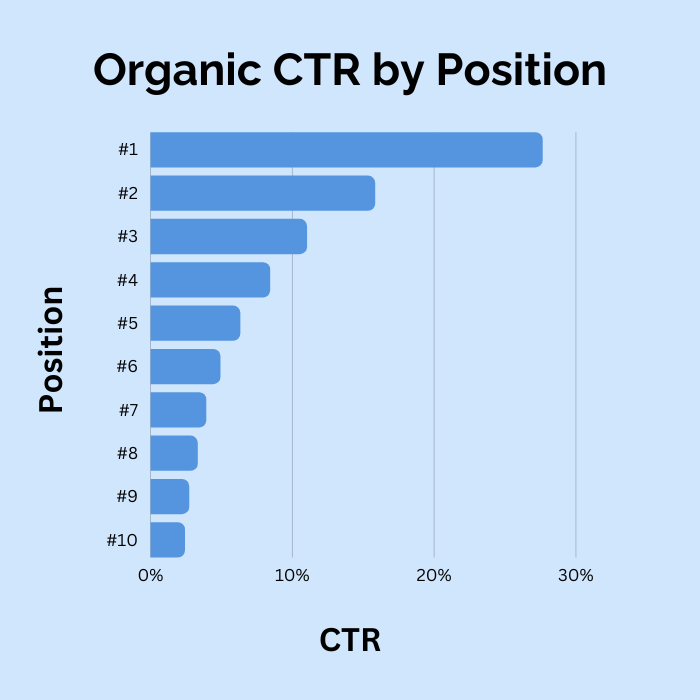
You can go behind the scenes of their SEO strategy and figure out how they got there, so that you can do the same thing.
Perhaps your competitors may have found a new strategy that nobody else is talking about, or are partnering with a reputable website to supercharge their rankings.
But, you won't know what they're doing, or how they reached the top, without some form of competitor backlink analysis.
Here's what you'll need to do to figure out their winning strategy:
1. Search for a Similar Page on Your Competitor's Site
I'm going to risk sounding like Captain Obvious over here, but in order to do competitor analysis, you'll need competitors.
I say this because not many businesses know how to look for their competitors—and think that similar businesses in their local area are the only brands to watch out for.
That can be true. But, when it comes to SEO competitors, the businesses you're competing with are those currently ranking for your primary keywords.
Let's use an example.
If I ran an SEO agency and wanted to find my biggest competitors, I'd Google "SEO agency." That's my primary keyword—and the one I'd love to rank for.
The sites that show up on the first results page would be my competitors:

Why?
The answer is simple, really.
The first 10 sites listed here have some proven ranking power. They're ranked as the best (and most relevant) sites for a keyword, with thousands of monthly searches.
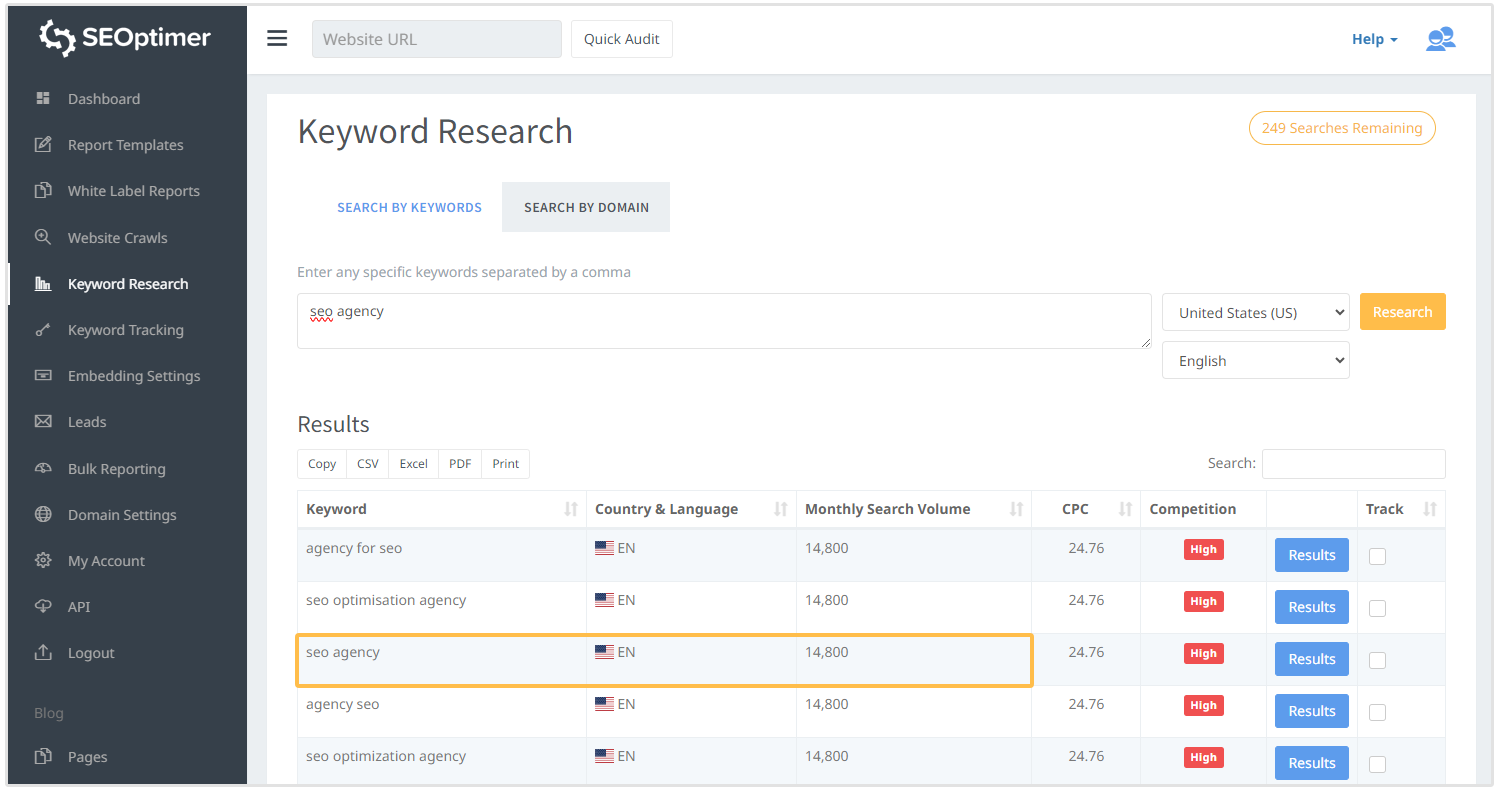
That's pretty impressive.
However, this process only works for homepages.
If you're doing competitor analysis and looking to improve your backlink strategy to specific pages, you'll need to put in a bit of extra work.
But don't worry, it's not that difficult!
All you'll need to do is find a similar page on the sites listed above, by doing a site search.
So, let's say that I've got a page on my SEO agency site that offers PPC services.
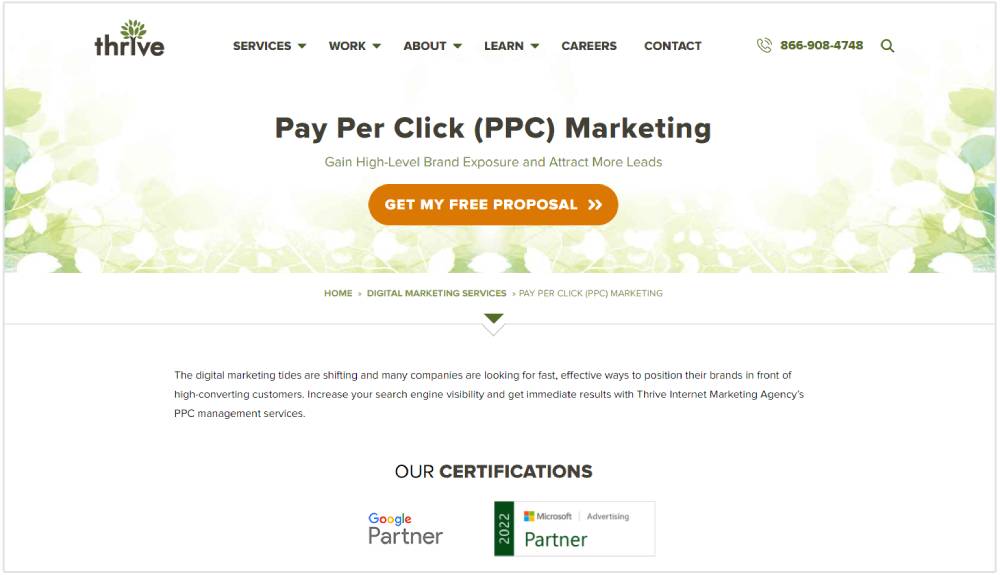
I could find the directly competing page on my competitor's website by entering the following into Google:
[site:Impression.co.uk + "PPC"]
You can replace the URL with another competitor from your list, and be greeted with the pages on their site which are most similar to yours.
It's the easy way of hitting the competitor jackpot!
2. Use a Backlink Research Tool to Collect Data
Now that we've found our competitor list, it's time to get technical.
Don't worry if you're not an Excel pro. I've got a nifty little trick for you that looks uber technical, but only actually requires you to make a few clicks.
Enter my secret weapon: SEOptimer's Backlink Research Tool.
All you need to do is enter the URL of your competitor's page. Then, you'll be greeted with a list of every backlink that points to it. From directories to guest posts, it's all in here—and ready for you to have a peek through.
If you were using SEOptimer as your competitor, here's what you'd see when using the tool:
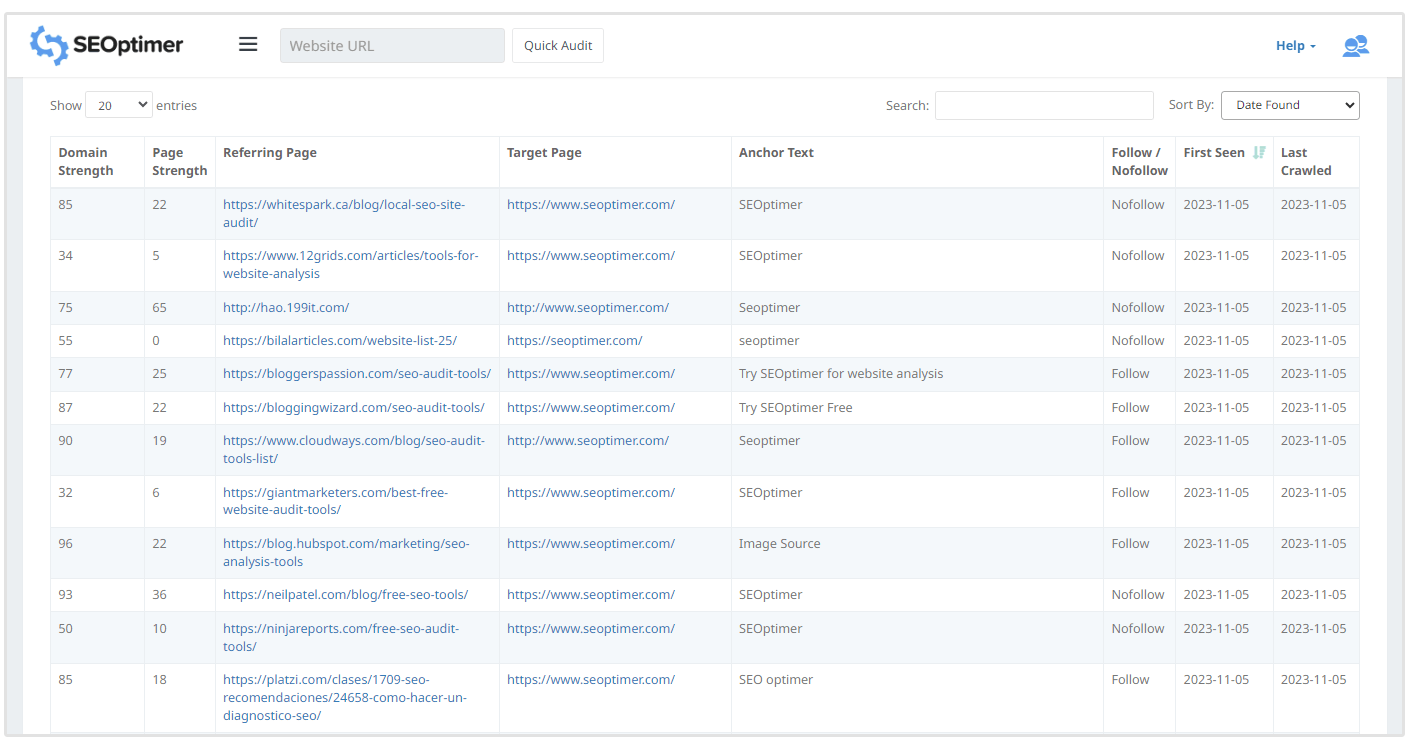
The backlink research tool details the URL of the backlink, so you can click through and see its position on the page.
It also includes key SEO metrics that will help you decide whether it's a good or bad backlink, including:
- Domain Strength
- Page Strength
- Anchor Text
- Follow/Nofollow
The backlink research tool is an awesome tool for running reports on your competitor's backlinks.
3. Analyze Each Site's Backlink Profile
Great job! You've whittled down your competitor list and completed all of the research you'll need to suss out their SEO strategies.
Now it's time to move onto the tricky (and tedious) stage: analyzing each site's backlink profile.
Throughout this process, you'll need to think about:
The Number of Backlinks
A high volume of backlinks could indicate why a site is performing so well in the SERPs.
Just take a look at this data found by Backlinko when they analyzed one million Google search results:
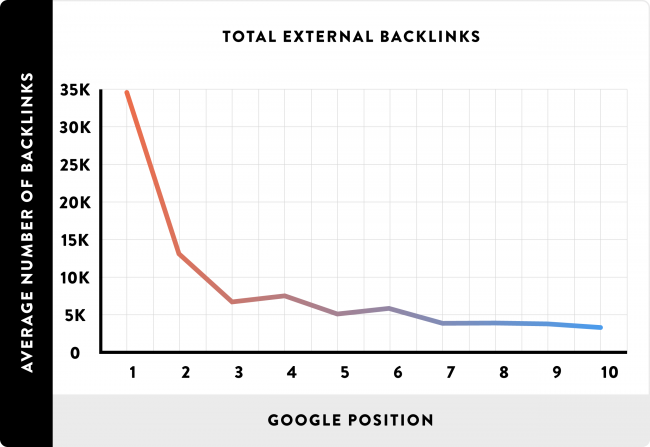
Sites taking pride of place in the SERPs have 35,000 backlinks pointing to them.
There's a sharp drop to ~13,000 for sites in position two, and the volume of backlinks, per site, continues to decline from there.
What does that tell us?
Well, if the competitor sites you're analyzing each have thousands of backlinks pointing to them, it could be the reason why they're taking the Google spots you're working so hard to reach.
However, this comes with a caveat.
The volume of backlinks doesn't always signal a well-optimized site. Quality reigns over quantity, so focus on building powerful backlinks—and avoid those from sites you don't want to be associated with!
Domain Strength of Backlinks
Another SEO metric to consider when analyzing your competitor's backlink profile is the percentage of backlinks that fall within each Domain Strength bracket.
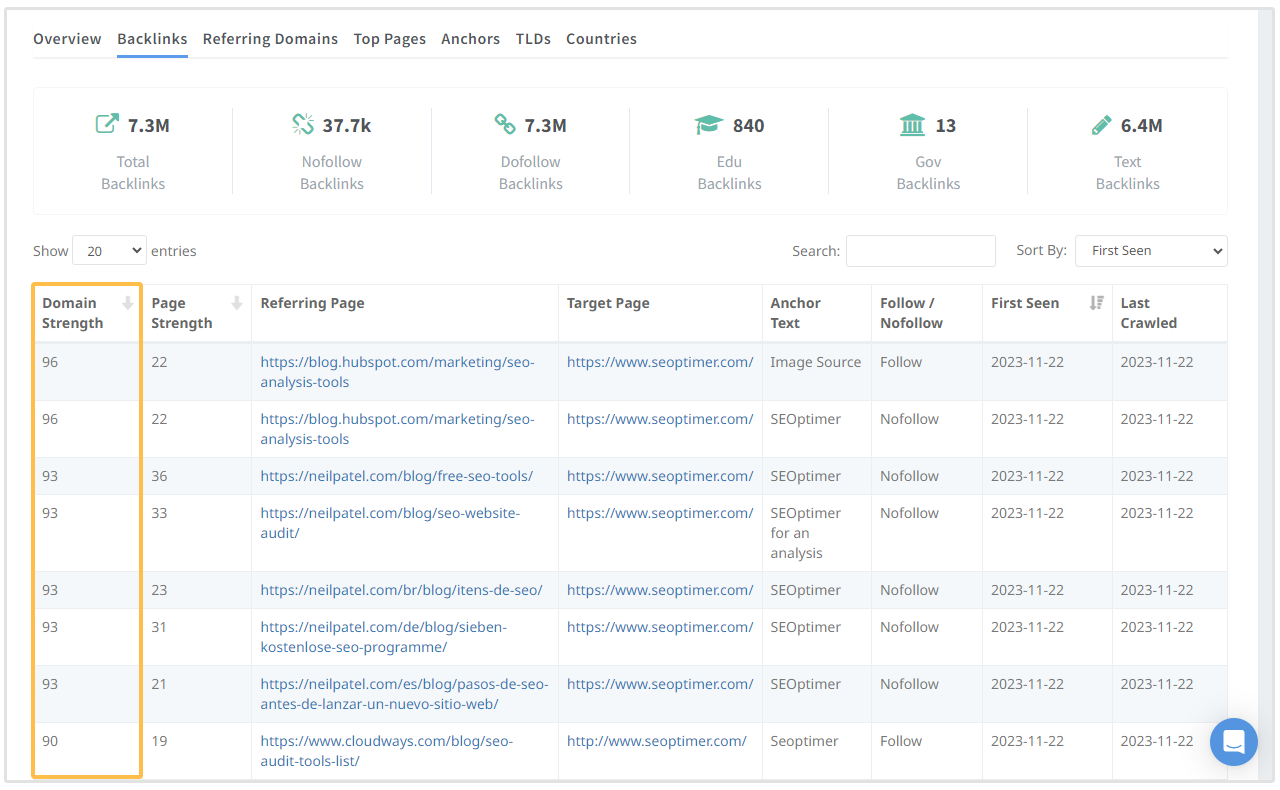
This is a score that indicates how well a site would rank in the search engines.
It's calculated based on the Domain Strength score of the sites your backlinks come from. That means if your competitors are virtually hanging around with SEO powerhouses, they're more likely to become one themselves—and increase their own DA score.
Go through each link and tally up how many fall within these categories:
- Domain Strength 0-29
- Domain Strength 30-49
- Domain Strength 50-69
- Domain Strength 70+
If your competitor's backlink profile is 90% made up of high Domain Strength backlinks in the 70+ bracket, it's pretty safe to assume that these are helping them reach the top spots.
Page Strength Ratio
Similar to Domain Strength, you should also look at the Page Strength of entries in your competitor's backlink profile.
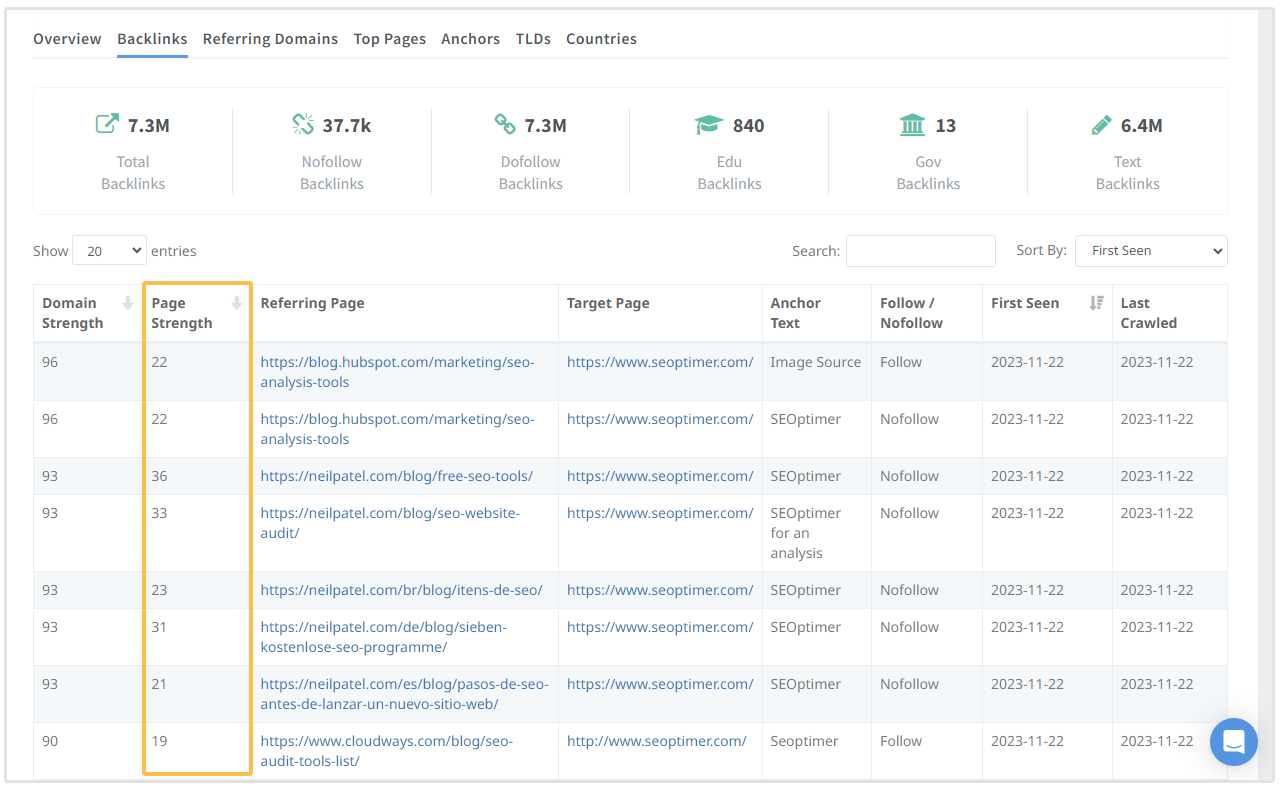
This tells you the authority of the page that the backlink derives from, rather than the entire domain.
Just like the authority of a domain, the authority of a page is determined by the Page Strength of sites linking to yours.
Why should we look at this?
Well, this score can also give an indication of how well a site will perform in the SERPs.
Break your brackets into the same categories we used for recording Domain Strength, and find the average Page Strength of the backlinks pointing to the competitor's site.
If this is anywhere above 40, add it to your list of reasons for taking pride of place—and add the improvement of Page Strength to your SEO strategy to-dos.
Anchor Text Ratio
The anchor text of a backlink is the bit of text that's used beneath it.
Want an example? In the sentence above, "anchor text of a backlink" is the anchor text.
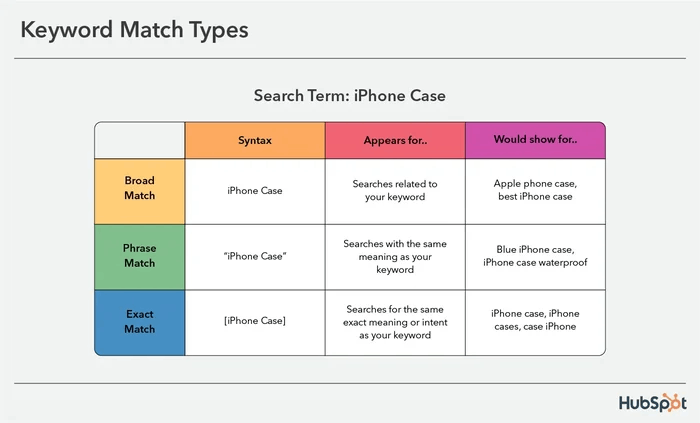
There are many forms of anchor text that you can use, each with their own technical terms:
- Branded - Your brand name! For us, that's "SEOptimer"
- Exact match - The primary keyword of your page, i.e. "SEO audit tool"
- Phrase - Expanding on your exact match keyword, i.e. "try this backlink software for small businesses"
Why is this important, I hear you ask?
Because it can show you a natural anchor text ratio.
Penalties can be given out for over-optimizing your site. That can happen if exact match anchor text populates a large chunk of your backlink profile.
On the other hand, phrase anchor texts don't have a ranking power as strong as branded or exact match.
For that reason, you'll need to find a balance between each type of content for your backlinks. You're able to find that by analyzing the ratio of anchor text used by your competitors.
4. What Works?
Now that we've got an overview of the type of backlinks that your competitors are collecting, let's take it a step further.
(Trust me, this legwork will pay off when you use the data to fuel your new strategy. It's not a complete waste of time, and definitely worth the time investment!)
Start by looking for any stats that are common across all of your competitor's sites.
They're all ranking on Page One. Similar traits could be the reason why.
Do They:
All Have High PR Backlinks?
If you see that the bulk of each competitor's backlink profile contains sites with a PageRank (PR) of 40 or above, it's not a useless pattern.
Instead of brushing it off as a coincidence, think about how you can replicate this to see similar SERP success on your own site.
The simplest way to do this is to target high PR sites for backlinks, yourself. That's because PR is improved by getting backlinks from other sites with a higher scoring than your own.
Reach out to sites with a high scoring, offer a guest post or ask for collaboration opportunities.
Improving the quantity of high PR backlinks in your own profile will help you to become a real competitor of theirs, and a site to really watch out for!
Come from Niche Websites or Big Publications?
It's usually good to have a diverse backlink profile. It demonstrates that your site isn't practising black hat SEO techniques, and gives a sense of credibility.
Sense check this by referring back to your competitors.
Where do their backlinks come from? Are the majority from niche websites, or big publications? Or even both?
Niche websites are sites that target specific industries, or discuss one topic. If we wanted to build a backlink to SEOptimer on a niche website, we might target Search Engine Watch.

Large sites are loosely related to the topic you discuss on your own site. For Monitor Backlinks, this might be Forbes.
You may find that on average, each backlink profile has a 50/50 split.
That makes your job relatively easy. For every link that you build on a niche website, build another on a larger publication, and vice versa!
Have Lots of Directory Links?
Oh, the beauty of a directory link.
Their value to SEO has been debated for years, but there's no questioning they can be valuable to e-commerce websites.
You see, directories don't just help with brand awareness (although they're awesome at that, too).
They tell search engine spiders that your website's reputable, and being recommended elsewhere on the internet.
Now, let's go back to your competitors.
Do they have directory backlinks? If so, what directories are they coming from?
Your job here is simple: Submit your own listing to each directory that your competitors are listed in.
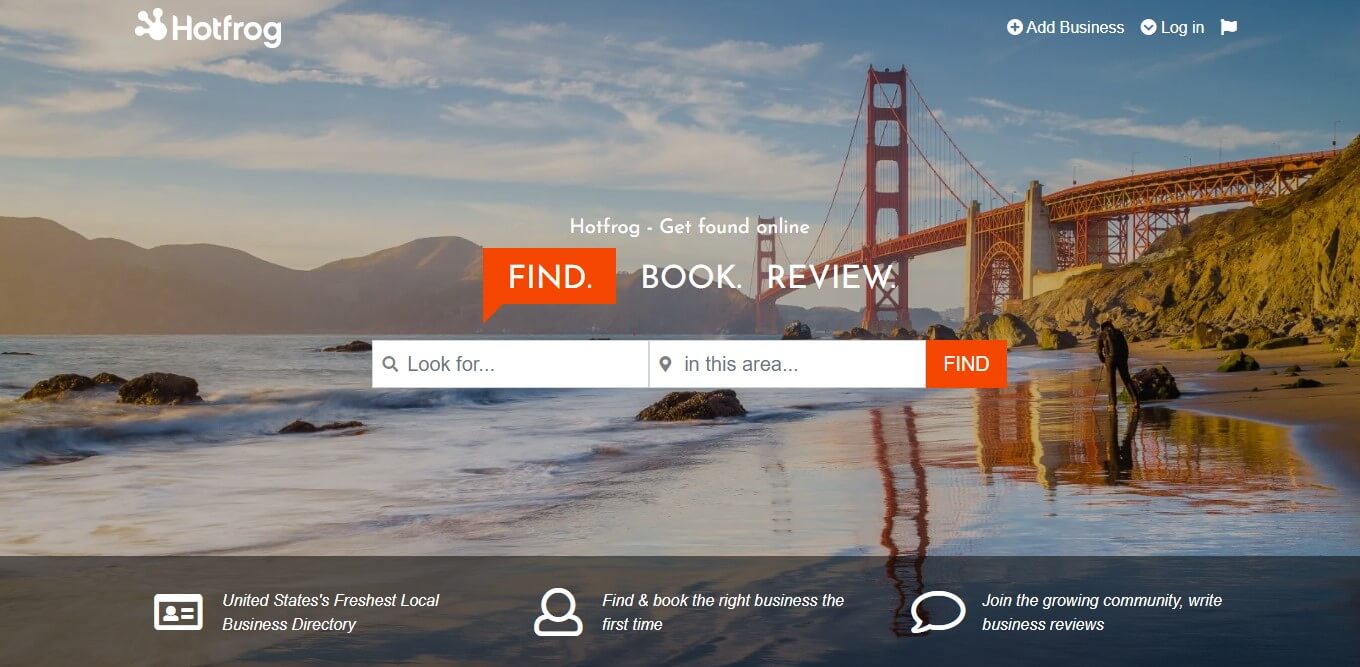
Because they're already in a similar industry to you, you know that the directories are worth your while.
It's really as easy as that!
All Come from One Website?
When you were analyzing each backlink profile, were there any sites that popped up frequently?
Often, big publications offer sponsorship or guest posting opportunities to businesses. You may have just hit the jackpot and discovered one, if you notice that a lot of your competitors have backlinks from one single site.
However, there's another caveat here: Check the SEO metrics of the site first.
If it's got a high Domain Strength and Page Strength, and decent site traffic, add it to your list of targets.
Getting a backlink from a site that your competitors work with is a sure-fire way to come for their SERP spots.
Do a Lot of Guest Posting?

I know what you're thinking when I say the words "guest posting."
But you don't need to quiver in your boots!
Gone are the days of paying for links on blogs in a network. Guest blogging has taken a new, more valuable turn.
You can now use guest blogging as a credible way to grow your brand awareness, drive traffic to your site—and more importantly, improve your SEO.
That's because guest blogging opportunities are available on SEO powerhouse sites, and you can get a slice of the action by contributing your own!
Referring back to your competitor's backlink profiles, can you see any obvious entries that have been built through guest posting? Check for links in their author bio, and see if you can reveal a "write for us" page on the linking site.
If you can, you might just be in luck.... Especially if they're industry-specific, have good SEO metrics and have already published similar content from your competitors!
5. Build Your New Strategy
Congratulations! You've now uncovered the strategies behind your competitor's SEO activity, which means it's now time to improve your own.
Start by adding any technique that you saw throughout this process, that you aren't already using.
Whether that's guest posting on high Domain Strength sites, building directory links or varying your anchor text usage, give it a go and record your results.
When we say results, that's usually keyword ranking positions.
You want to see your site rise up the ranks for the keyword you started with.
If you're using SEOptimer, you can easily track those keyword rankings to see how well your strategy's going.
Under the "Keyword Tracking" tab, you can see how your keywords are currently performing and track how they've improved with your new strategy.
![]()
You can even get weekly keyword reports sent straight to your inbox, so you'll be across every move.
Just remember that SEO is a long game, and you might not spot any remarkable improvements for a few months.
Be patient. If you're building links that have been proven to work, the success will come!










